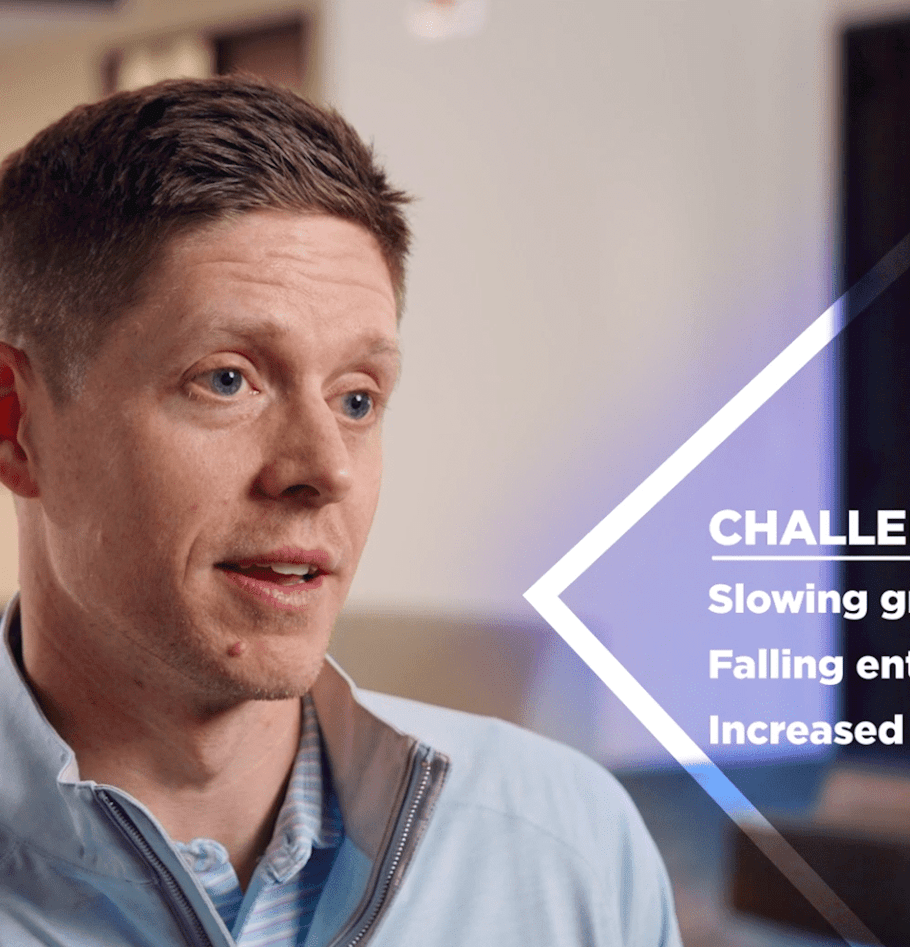How to drive product-led growth in enterprise software
Market dynamics are shifting the way enterprise software organizations grow—here’s how to keep up with this rapid change
Enterprise software is rapidly moving away from the traditional sales-led growth model. It’s being replaced by product-led growth, where the primary mechanism to acquire, activate, and retain customers is largely embedded into the product’s function. In fact, Gartner predicts this type of revenue enablement model will define most of the highest-growth companies over the next several years. As this shift occurs, annual recurring revenue (ARR) growth is becoming a core business metric—if not the metric—for many software companies.
This puts significant pressure on product teams to continually innovate and iterate products and services to deliver a compelling customer experience that drives new revenue.
To capitalize on this new dynamic, enterprises need a sound strategy for where to play and how to win in the marketplace. Just as important, that strategy must be adaptable to rapid change, and it must be able to be operationalized quickly and effectively.
From our work with enterprise software leadership teams—including chief revenue, product, and strategy officers—we’ve identified two key practices that power high-performing teams and drive repeatable, superior growth.
Use a disciplined framework for guiding product development
An effective product-led growth strategy should inform decision-making across three dimensions: which markets to target (where to play), which features and capabilities are required (what to have), and how to bring them to the market (how to win).
Leading companies continuously conduct detailed assessments of new and adjacent market and product opportunities, customers’ needs and expectations, and competitive strengths and weaknesses. This helps arm themselves with insights for making strategic product decisions.
Market-sizing analyses and customer interviews/surveys provide relevant input for shaping decisions about where to play. Similarly, assessments of the current product suite, market penetration, competitive research, and appetite for investment can help determine how to win.
Firms that consistently meet or exceed their growth objectives are ones that conduct proactive, systematic assessments of needs and opportunities across the product and market landscapes. A mix of tools and methods that include input from analysts, the voice of customer, and the voice of market studies, as well as perspectives from current customers, sales, marketing and product management should be synthesized to inform roadmap and investment direction.
An example of this: A $30 million public safety and incident reporting software company needed to drive revenue growth. This company competes in a crowded industry, with both established and start-up players. They needed to broaden their offerings to serve current customers in a more comprehensive way.
Through a rapid but extensive market study, the company was able to assess the competitive landscape of solution offerings and size target industries. It then conducted an industry survey to test different solutions, features, functionality, and pricing models. Finally, after validating findings with numerous experts and customer interviews, the company identified $1.6 billion in new market opportunities. These assessments enabled the organization to move rapidly and begin capturing $10 million in annual recurring revenue from new products.
Develop high-velocity capabilities and approaches that enable iterative and rapid deployment
The rapid pace of change, evolving market, and competitive dynamics in the high-tech and software industry require agility and speed in product development. Leading firms define sufficient process structure to provide role clarity and define operating boundaries while empowering the multidisciplinary development teams with sufficient freedom to operate and innovate. While agile methodology provides a sound operating framework, two key aspects we identified are:
-
Ensuring that all teams are sufficiently aligned so that execution can flow quickly from customer feedback and strategic decisions. For top-performing product-led growth companies, we see a tight connection between product feedback that Customer Success receives, the quantitative and qualitative feedback that Support gathers, and the cadence of product updates that directly align to that input.
-
How can you bridge those gaps so that execution can proceed more efficiently? We have found an effective way to build stronger connections is to “formalize” the strategy by chartering a team whose mission is focused on a specific quadrant of the matrix depicted below. It’s important to recognize that each segment of the matrix requires different skills; therefore, the team should be built specifically for its mission. For example, a product development team (lower left quadrant) should be particularly adept at leveraging usage data and optimizing current products to drive retention and customer satisfaction.
-
The other important enabler of high velocity product development is a frequent and ongoing market testing program to ensure customer needs are being met. This requires an organizational mindset that encourages rapid experimentation, as well as the ability to conduct such experimentation through disciplined practices for testing, measuring, and responding to customer feedback – and repeating those processes continuously.
-
Finally, successful product innovation is the result of a diverse and multi-disciplinary approach. The most effective organizations don’t just have industry expertise and knowledge around customers, competitors, challenges, and market opportunities. They also align the product management, customer success, support, engineering, marketing, and other functions to make sure they can bring the right product to market, for the right customer segment.
| Existing Market | New Market | |
| Existing Product |
Market penetration: existing market/existing product
|
Market development: new market/existing product
|
| New Product |
Product development: existing market/new product
|
Diversification: new market/new product
|
Where to begin: Start with an assessment
To achieve systematic growth, remain competitive, retain talent, and drive higher valuations in today’s growth-oriented environment, it’s imperative to be disciplined about identifying new product and market opportunities—and then delivering them at an accelerated pace.
For many software organizations, this involves a cultural and operational shift as much as a strategic shift. But that doesn’t have to be daunting. Begin by assessing your organization against the characteristics above by asking questions:
-
Where does our current and planned product suite fit on the market/product quadrant?
-
How rapidly can we mobilize and launch new products or product innovations?
-
How—and how well—are we engaging customers in the feedback process?
-
Are we organized adequately to deliver on those specific strategies?
-
Do we have the right skills aligned with each strategy?
Use that insight to identify specific steps—no matter how small—that will drive meaningful change toward accelerating product-led growth.
West Monroe’s New Product Development offering facilitates your journey from identifying new opportunities to delivering winning products that delight your customers and drive recurring revenue. For assistance with reaching your product development goals, contact us.

